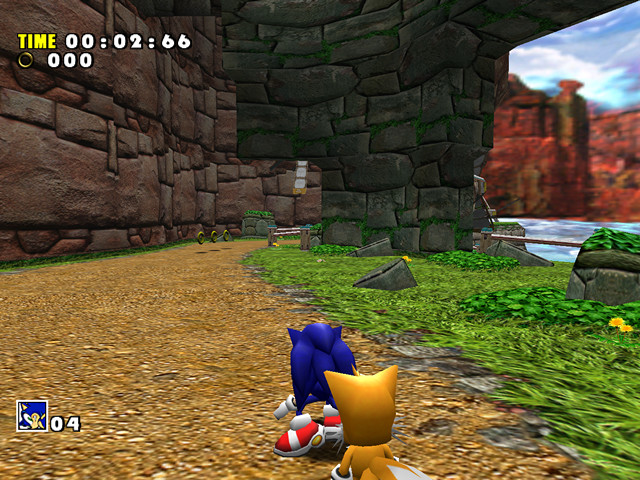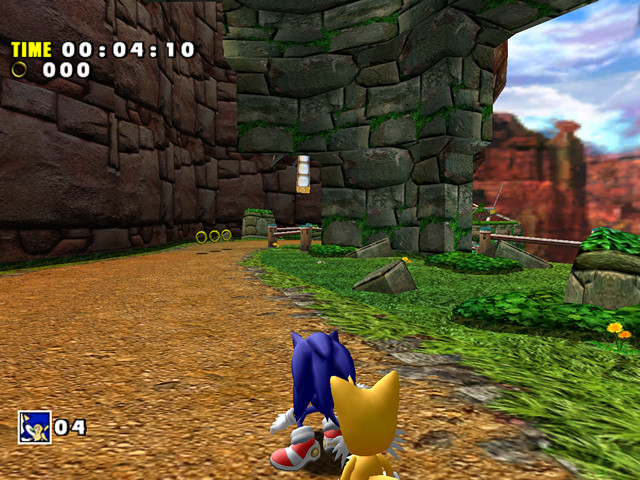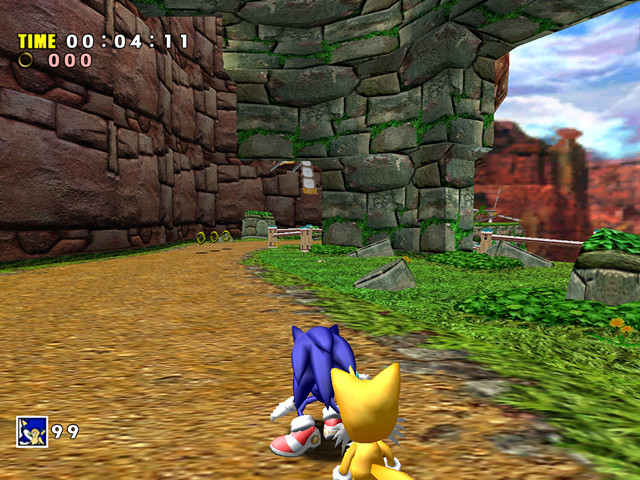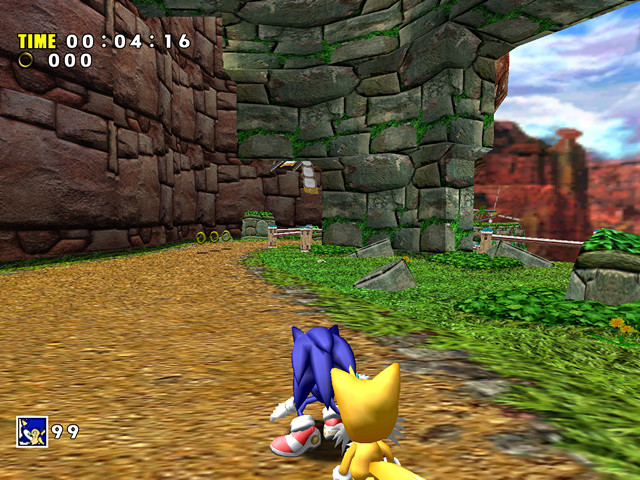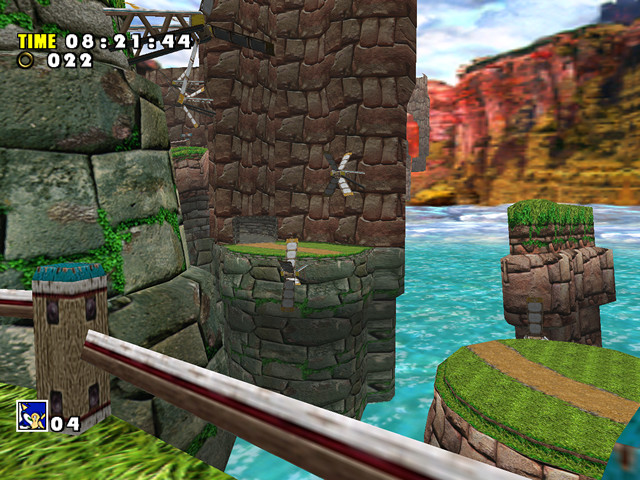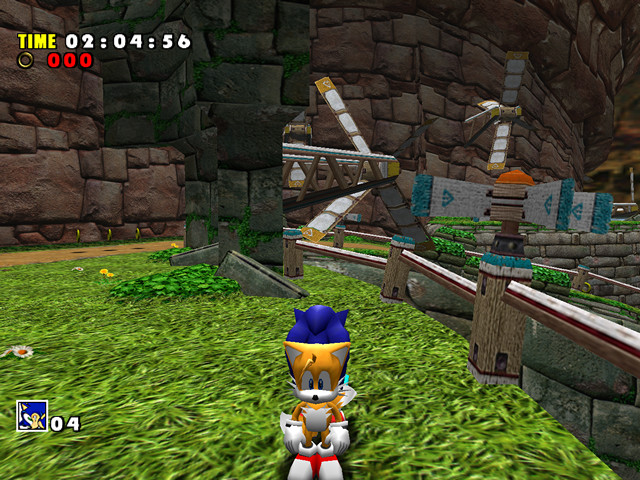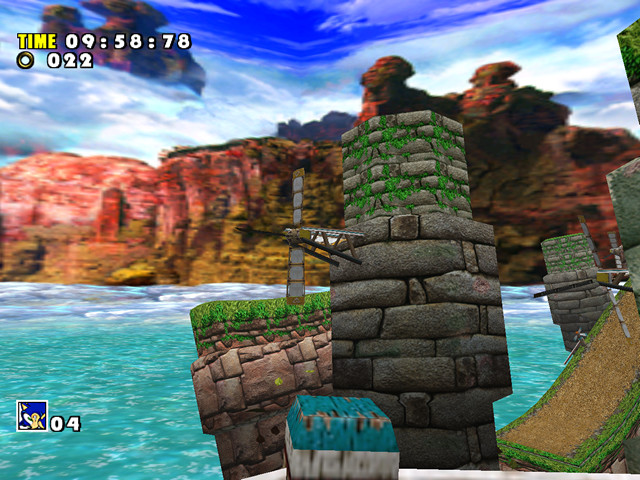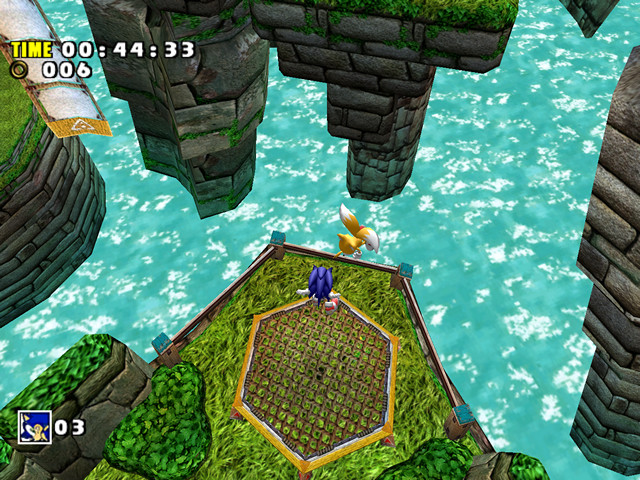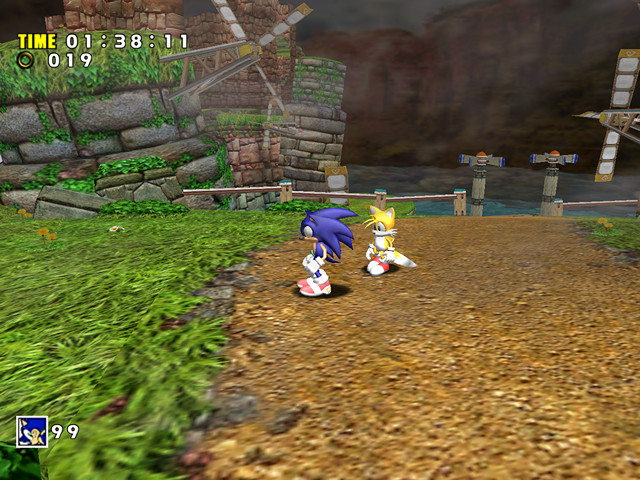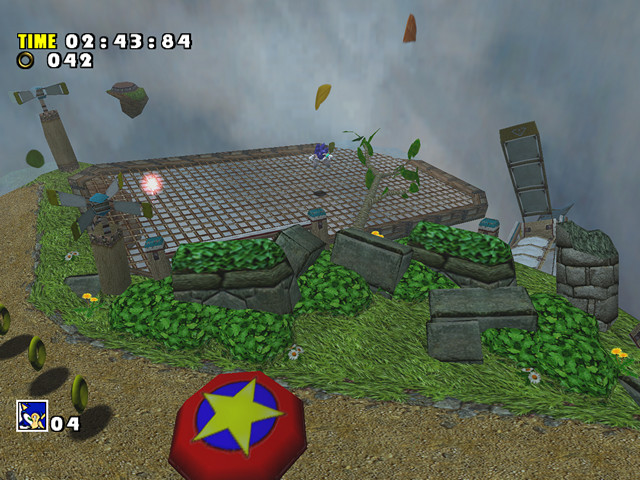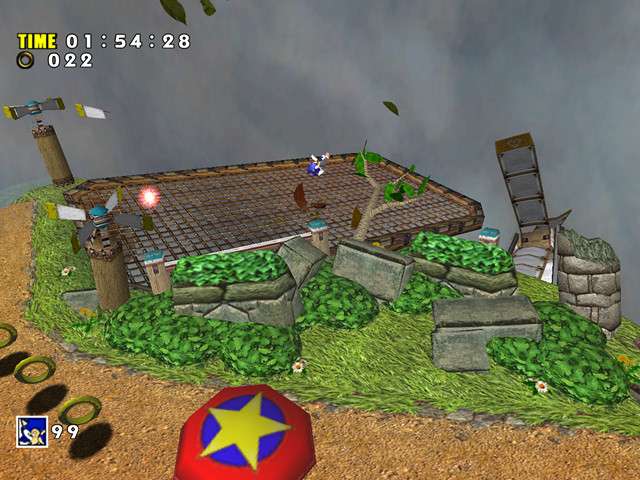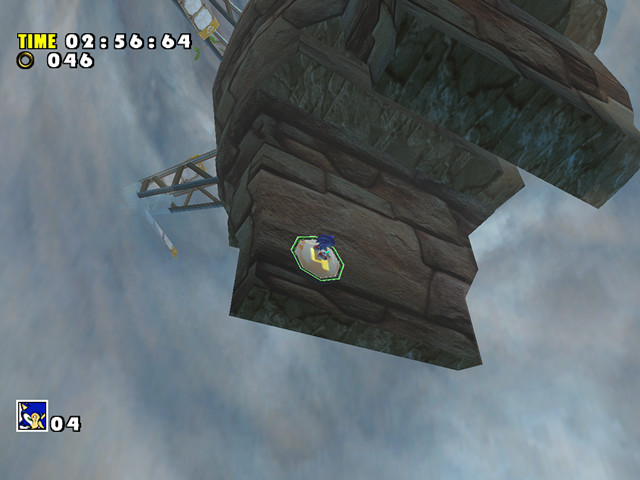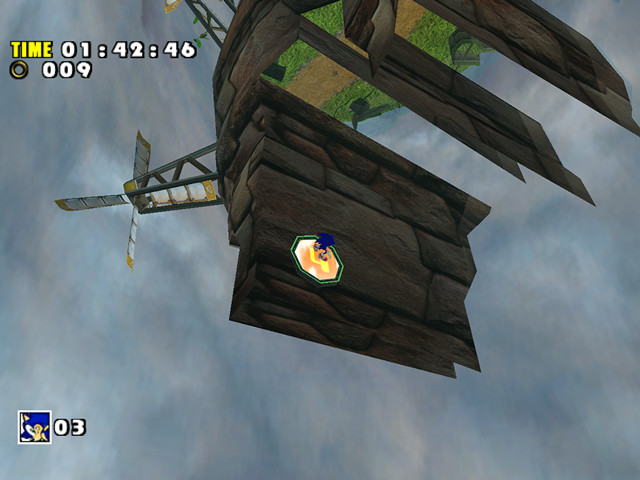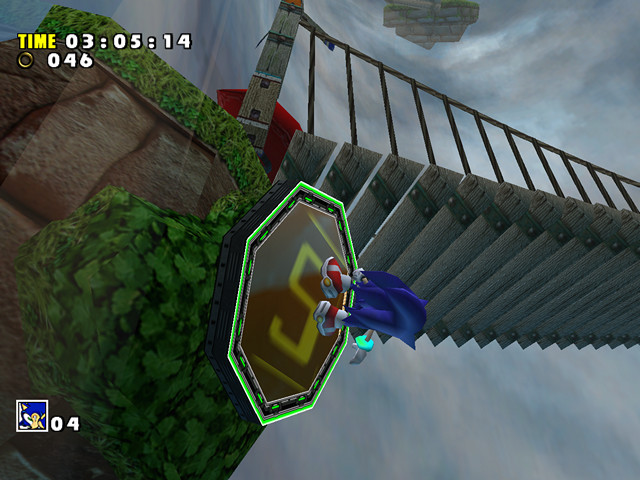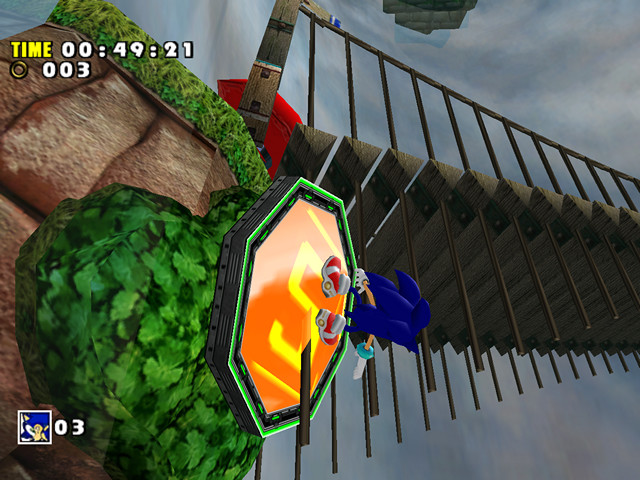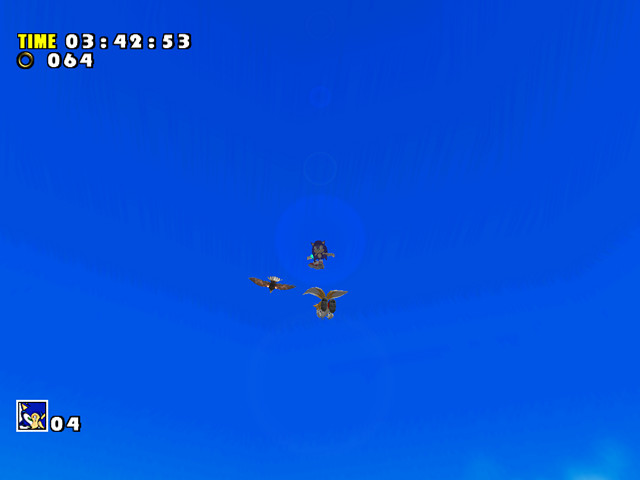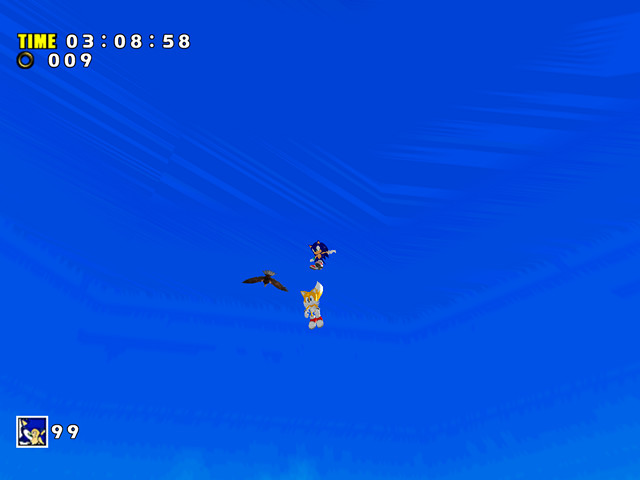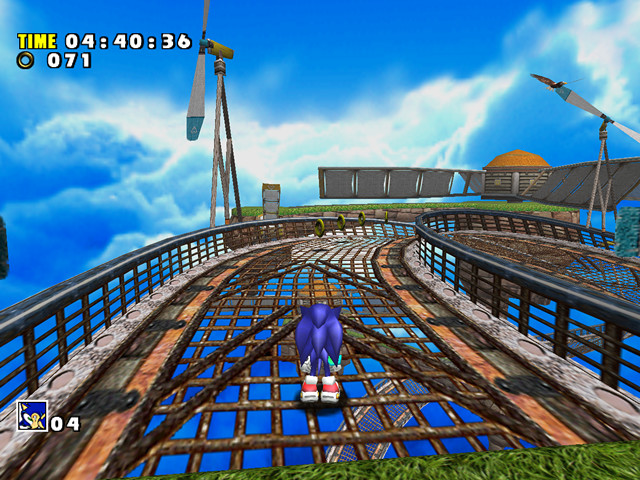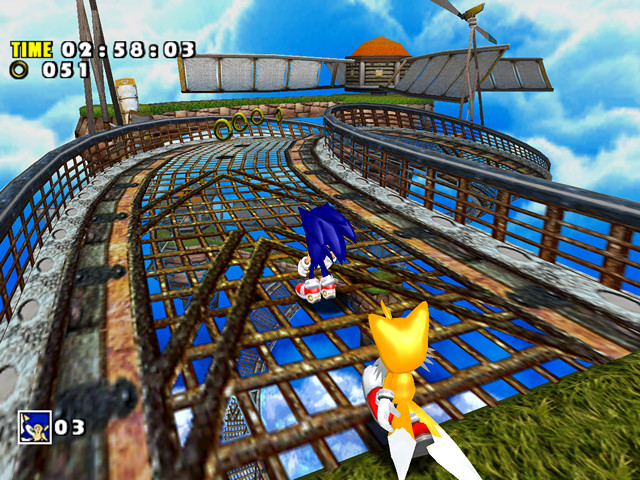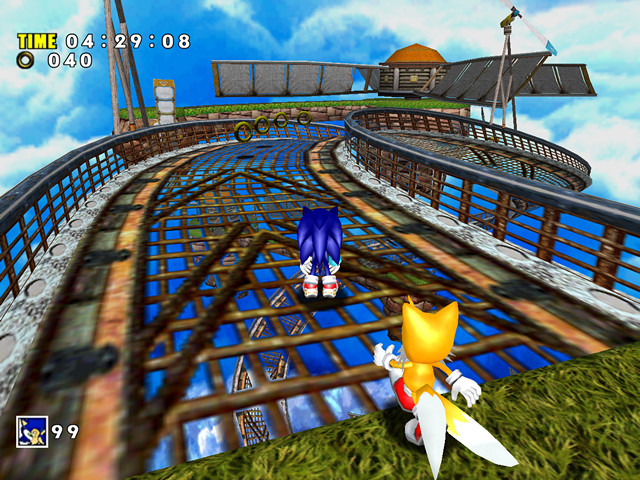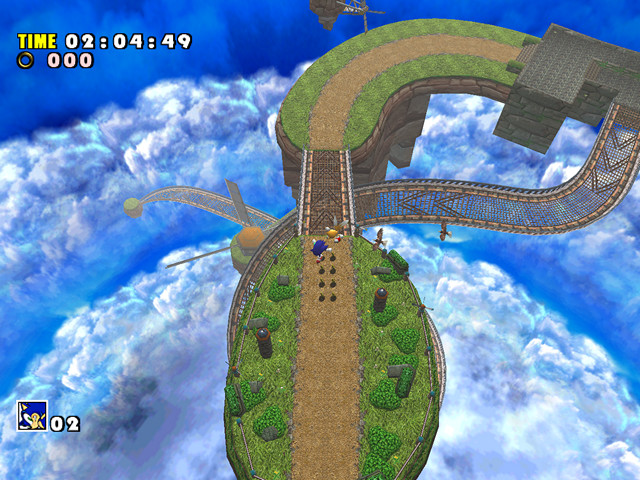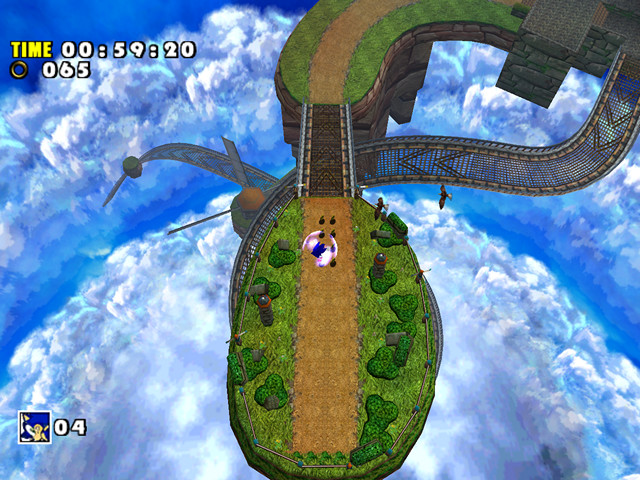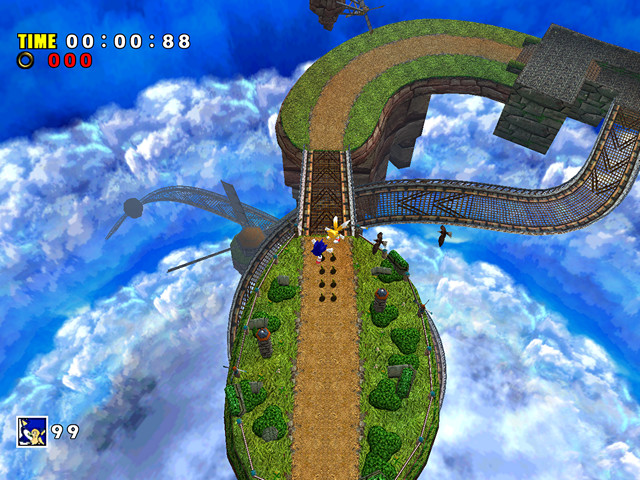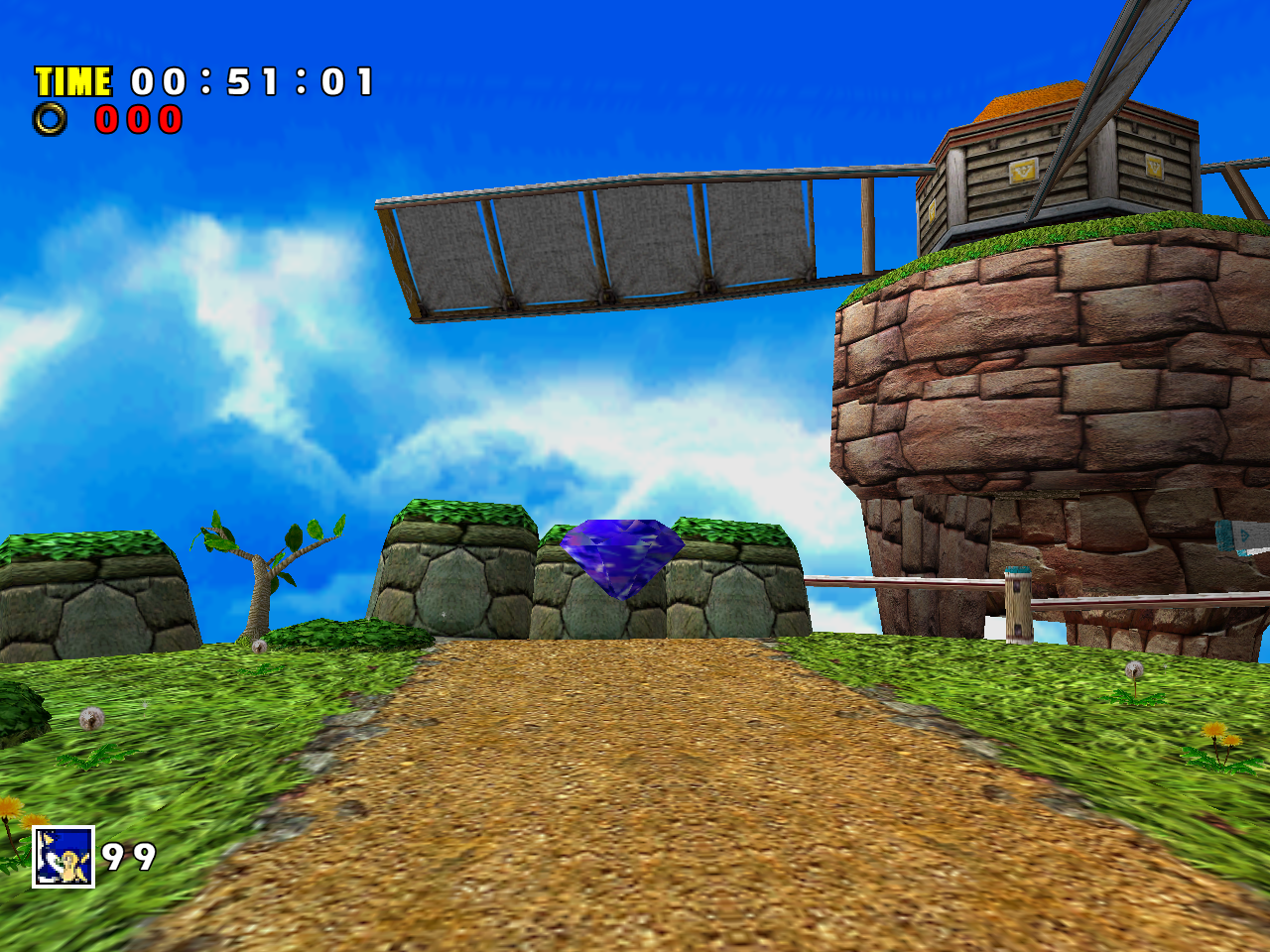From a quick look it might seem that Windy Valley didn’t change from SA1 to SADX. The first two acts are short, and the last act doesn’t have complex lighting or any particularly difficult special effects. Unfortunately even Windy Valley has some serious issues in the ports.
Act 1 is the area where you can notice the ports’ inferior texture quality. This is what you see right after entering the stage. The PC version screenshot has mipmaps enabled in the Mod Loader, normally it looks even worse.
Notice how the Gamecube version’s fake lighting, which admittedly looks pretty good in this area, didn’t carry over to the PC port. To compensate for the loss of the Dreamcast’s palettized lighting, some textures, such as the rocky walls, were made darker. In addition, there’s a color mismatch between the grass and the path texture’s edge in SADX, which could be either a design inconsistency or a side effect of texture recompression in the ports.
The textures in the PC version also lack mipmaps, which makes distant areas look problematic, especially in motion. Any movement reduces distant textures into a pixelated mess. It can be made to look better with anisotropic filtering, but it won’t look as good as real mipmaps. Thankfully SADX Mod Loader has automatic mipmap generation to correct that, and before the Mod Loader there were mods that added mipmaps to the PC version. Back when the PC port came out it looked like this (You can read more on it in the Textures section):
Several parts of the scenery are missing throughout the whole Act 1. For example, most of the wind turbines in the screenshots below are present in the Dreamcast version, but gone in SADX Gamecube and PC:
An interesting detail about the Dreamcast Windy Valley is its transparent skybox. The level pieces that are suspended in the air look like they are partially submerged in water. In the ports the skybox was made bigger and the effect was removed. It seems that the developers have tried to compensate for it by adding greenish vertex colors to the pieces involved, but it doesn’t look too convincing because the skybox is still far away. In addition, because the skybox is bigger and lacks transparency in SADX, the “parallax” effect seen in the original game when multiple layers scroll at different speeds is gone in SADX as the bottom layer of the skybox is invisible.
The Dreamcast version has dynamic fog that changes color and intensity depending on where you are in the level. When the tornado appears, the fog is supposed to get darker and thicker, but this effect is broken in the ports.
In the Dreamcast version, fog is often used to enhance the overall ambience of an area. For example, in Windy Valley Act 2 there is greyish-blue fog – a subtle, but effective touch to create the feeling of being inside a tornado. This effect is gone in SADX because fog is turned off for the area:
The following area has missing textures in SADX because of unnecessary material flags and/or incorrect texture conversion. The original Dreamcast level also has these wrong flags but the game processes the meshes correctly.
All later ports have strange-looking overhanging ropes on the collapsing bridge. Interestingly similar bridges in Ice Cap and Red Mountain (which use the same code) are unaffected. Some time ago I found out this is caused by a model change – for some reason the developers stretched the model used for vertical ropes. The UVs on the ropes are also stretched, which suggests it may have been done by accident. Also notice how the lighting on Sonic and the objects fits the environment in the Dreamcast version, while the Gamecube version’s lighting is more generic.
Act 3 begins with color banding in the sky, which looks odd in all versions of the game, but each more makes it more apparent.
Issues with transparency shows up on a few paths in this act. To work around transparency problems, the ports use alpha rejection – a feature that doesn’t let the engine display pixels whose transparency is beyond a certain threshold. It’s not the worst solution for its time, and it would’ve been an okay compromise if it didn’t break a substantial amount of unrelated special effects. The Dreamcast version didn’t have any drawbacks associated with transparency and alpha rejection. More on this in the Transparency section. Here’s what alpha rejection is used for in this level:
The third act also had a subtle white fog effect, which made it look like the area was bathing in sunshine. The effect is gone in SADX – while the fog is still there, its color was changed to a duller one, and fog distances were adjusted farther so there is no visible coloration on nearby objects and level geometry. This would’ve worked better in Emerald Coast to prevent washing out the sand color in the PC version.
Finally, the “goal” emerald’s pulsating glow is missing in SADX.
The removal of the glow effect is a relatively minor issue. However, as this blog demonstrates, the entire game has many details removed in every level, and after so many downgrades it ends up losing its charm. Together with the removed lighting and reduced texture quality the “enhanced port” does not compare favorably to the Dreamcast original. In the PC version, this level can be improved significantly by reverting to the original Dreamcast version of level models, fixing texture quality by using textures from the original game, and adding back fog effects and palettized lighting from the Dreamcast. More on that in the “Fixing the PC version of SADX” section.
